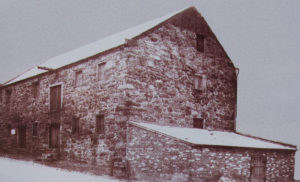 The Founding of Petersburg, Peter Jones Biography
The Founding of Petersburg, Peter Jones Biography 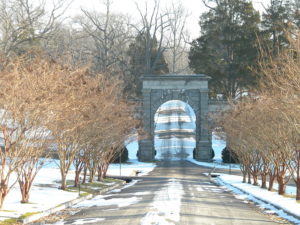 1702, Blandford Cemetery
1702, Blandford Cemetery 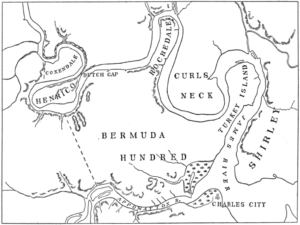 1730, Petersburg Harbor and Port
1730, Petersburg Harbor and Port 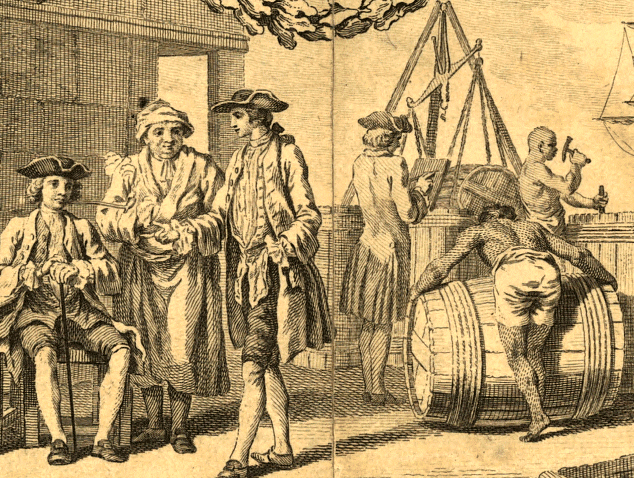 1730, Petersburg’s Tobacco Industry
1730, Petersburg’s Tobacco Industry 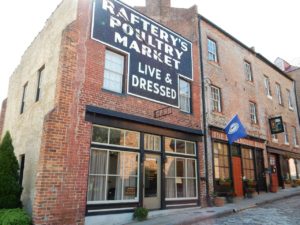 1733, Old Towne Petersburg
1733, Old Towne Petersburg 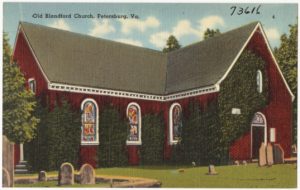 1735, Blandford Church and the Ladies Memorial Association
1735, Blandford Church and the Ladies Memorial Association 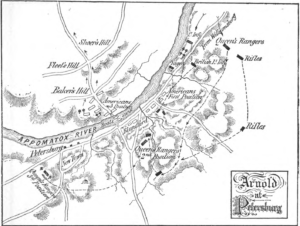 1781, The Revolutionary War Battle of Petersburg
1781, The Revolutionary War Battle of Petersburg 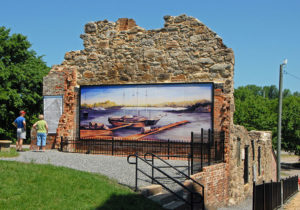 1785, Peter Jones Trading Station
1785, Peter Jones Trading Station  1815, The Most Disastrous Fire in Petersburg’s History
1815, The Most Disastrous Fire in Petersburg’s History 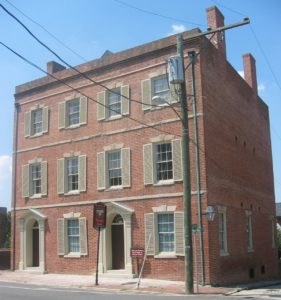 1817, The Farmers’ Bank
1817, The Farmers’ Bank 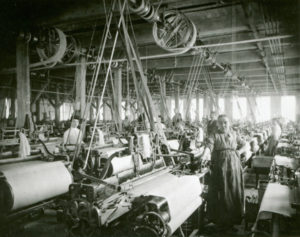 1820, Petersburg’s Cotton Industry Begins
1820, Petersburg’s Cotton Industry Begins 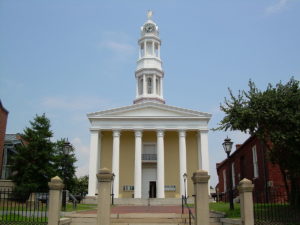 1839, Hustings Courthouse
1839, Hustings Courthouse 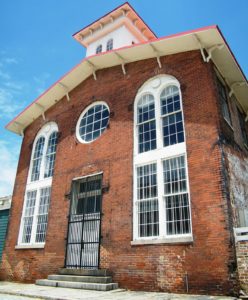 1854, South Side Rail Road & Station
1854, South Side Rail Road & Station 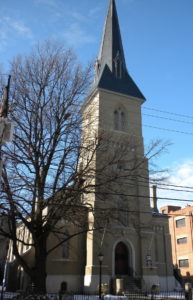 1857, Saint Paul’s Episcopal Church
1857, Saint Paul’s Episcopal Church 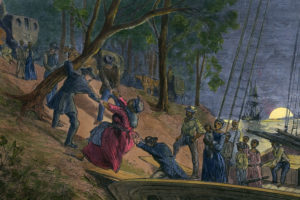 1858, The Keziah Affair
1858, The Keziah Affair 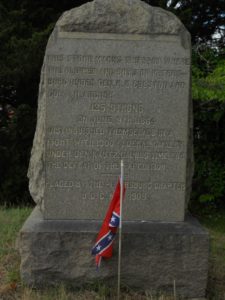 1864, The Battle of Old Men and Young Boys
1864, The Battle of Old Men and Young Boys 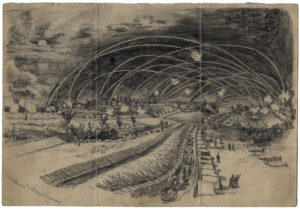 1864, The Beginning of the Siege of Petersburg
1864, The Beginning of the Siege of Petersburg 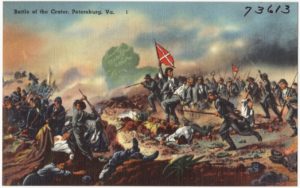 1864, The Battle of the Crater
1864, The Battle of the Crater 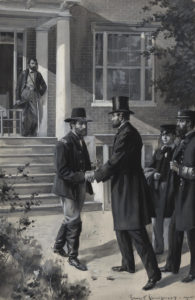 1865, The Lincoln Grant Meeting
1865, The Lincoln Grant Meeting 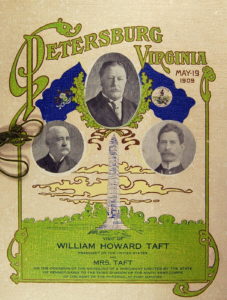 1909, President Taft Visit
1909, President Taft Visit The Founding of Petersburg, Peter Jones Biography
The prevailing opinion among historians is that the City of Petersburg is named for Peter Jones. If indeed this is the case, precious little historical information exists on the life of Peter Jones. His parents, his birthplace, and the dates of his birth and death are not positively known. The first mention of Peter Jones in the historical record is dated June 1, 1655, when a Peter Jones witnessed an agreement signed by Abraham Wood. >Read More
1702, Blandford Cemetery
Blandford Cemetery is the second largest cemetery in the Commonwealth of Virginia, surpassed only by Arlington National Cemetery outside Washington, D.C. Approximately 14 years after the Episcopal Church in Petersburg moved from Blandford Church to the site of the current courthouse in downtown Petersburg, the city purchased the abandoned church building and four surrounding acres in 1819 to establish a cemetery. >Read More
1730, Petersburg Harbor and Port
The founding of a settlement on the south side of the Appomattox River in the 1630s, the building of Fort Henry there in the 1640s, and the initial planning for the city of Petersburg there by William Byrd II in the 1730s were all based on one geographical reality: the presence of the falls of the Appomattox River. >Read More
1730, Petersburg’s Tobacco Industry
“Manufactured tobacco has always been among Petersburg’s important exports.” In fact, there were tobacco warehouses in Petersburg before there was a town of Petersburg. In 1730, Colonel Robert Bolling received authority to conduct an inspection at his tobacco warehouse on land known as Bolling’s Point, probably on the site of the 1878-1879 Farmer’s Market. >Read More
1733, Old Towne Petersburg
The establishment of Fort Henry at the Falls of the Appomattox in 1645 expanded the English settlement that began in the previous decade south of the Appomattox River. The founding fathers of Petersburg, Abraham Wood and Peter Jones, were military and trading leaders at the Fort Henry complex during the 17th century. >Read More
1735, Blandford Church and the Ladies Memorial Association
Blandford Church is the “oldest structure in Petersburg with a clearly documented history.” It stands today as a memorial to Southern soldiers who died during the Civil War. It was built from 1735 to 1737 on the highest point in Petersburg, Well’s Hill. >Read More
1781, The Revolutionary War Battle of Petersburg
The Civil War Siege of Petersburg from June 1864 to April 1865 is the historical event that has made the city internationally known, but relatively few Virginians know about the Revolutionary War Battle of Petersburg. Virginia was the scene of some small battles soon after the war began, and some British forces operated in and around Virginia in 1779 and 1780. In 1781, however, Virginians felt the full fury of the war.>Read More
1785, Peter Jones Trading Station
Traditionally this stone structure has been thought to date back to c. 1665 as part of the Peter Jones Trading Station, and therefore the oldest building in Petersburg. Also called the Stone Lumber House, this property was part of the original Fort Henry tract owned by Abraham Wood and Peter Jones in the 17th century. >Read More
1815, The Most Disastrous Fire in Petersburg’s History
The city of Petersburg has endured numerous, devastating fires over its history. The 1784 town charter allowed the city to purchase firefighting equipment, which was indicative of recurrent fires during the 18th century. In 1788, the oldest fire company in Petersburg, the Old Street Fire Company, was formed. The most destructive fire in Petersburg history occurred on the night of July 16, 1815. >Read More
1817, The Farmers’ Bank
Built in 1817, the Farmers’ Bank in Petersburg is one of the oldest bank buildings in the United States. The building resulted from the action of the General Assembly on February 13, 1812, that established the “Farmers’ Bank of Virginia” in Richmond. >Read More
1820, Petersburg’s Cotton Industry Begins
Cotton manufacturing was one of the largest industries in Petersburg for about a century, beginning in the 1820s. In fact, Petersburg was the northernmost city in the United States that both received cotton from nearby fields and processed cotton into manufactured goods. The first large cotton factory in town, the Petersburg Manufacturing Company, opened in 1826. >Read More
1839, Hustings Courthouse
Petersburg grew up around Fort Henry on the Appomattox River beginning in 1645, and the town of Petersburg was founded in 1748. In May 1784, Petersburg was incorporated as a borough. Under that incorporation, a court of hustings was to be held on the first Wednesday of each month. That court still functions in the modern city of Petersburg. >Read More
1854, South Side Rail Road & Station
The South Side Rail Road (as it was known originally) was chartered in March 1846, two months before the United States declared war on Mexico. This rail line ran 124 miles west to Lynchburg. It eventually superseded the Upper Appomattox Canal, which had long provided continuous waterborne freight traffic from Farmville east to Petersburg. >Read More
1857, Saint Paul’s Episcopal Church
The earliest Episcopal Church in this area was Cittie Church, located in present-day Hopewell. It was formed in Bristol Parish by the General Assembly in 1642 (Old Calendar). Today, as the oldest congregation in the parish, Saint Paul’s Church is known as the “mother” church of Bristol Parish. >Read More
1858, The Keziah Affair
The successful and even abortive escape attempts of Virginia slaves to the North often engendered a visceral response from the white population. In 1855, the Norfolk Southern Argus wrote that the “frequent escapes of fugitives from our port” were “an intolerable evil.” >Read More
1864, The Battle of Old Men and Young Boys
On May 5, 1864, Union Major General Benjamin F. Butler landed his 30,000-man Army of the James at Bermuda Hundred, commencing what became known as the Bermuda Hundred Campaign. After about four weeks of fighting in Chesterfield County, Butler ’s spies indicated in early June that only the 7th North Carolina Cavalry Regiment, 300 members of the 7th Confederate Cavalry Regiment, and a “few pieces of artillery” remained in Petersburg. (Photo by Tim Talbott) >Read More
1864, The Beginning of the Siege of Petersburg
Petersburg, Virginia, is known first and foremost for being on the receiving end of the longest siege in American history. The siege began on June 15, 1864, with the Union Army’s attack on Confederate earthworks east of the city, and it ended with the withdrawal of the Confederate Army of Northern Virginia from Petersburg and Richmond by early morning on April 3, 1865. >Read More
1864, The Battle of the Crater
“It has been said that the Battle of the Crater is the most spectacular event in our history.” So wrote a local historian about the best-known event in the entire 292-day Siege of Petersburg. The siege began with four days of strong Union attacks on the eastern defenses of Petersburg from June 15 to 18, 1864. >Read More
1865, The Lincoln Grant Meeting
Momentous events in American history occurred in late march and early April 1865 in and around Petersburg, Virginia. The defeat of Major General George E. Pickett’s Confederate force at the Battle of Five Forks on April 1, 1865, opened the way for Union forces to finally sever the South Side Railroad to the west of Petersburg on the following day. >Read More
1909, President Taft Visit
On May 19, 1909, “Centre Hill was the scene of one of the best parties we ever had—a reception to that genial President of the United States, William Howard Taft.” Taft was a Republican, the 27th President of the United States. >Read More
Share this!